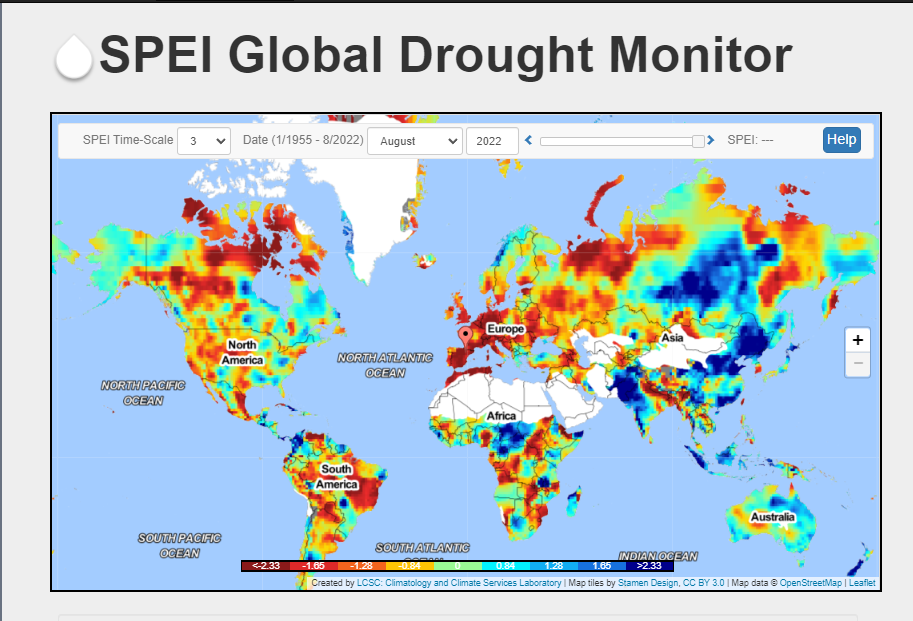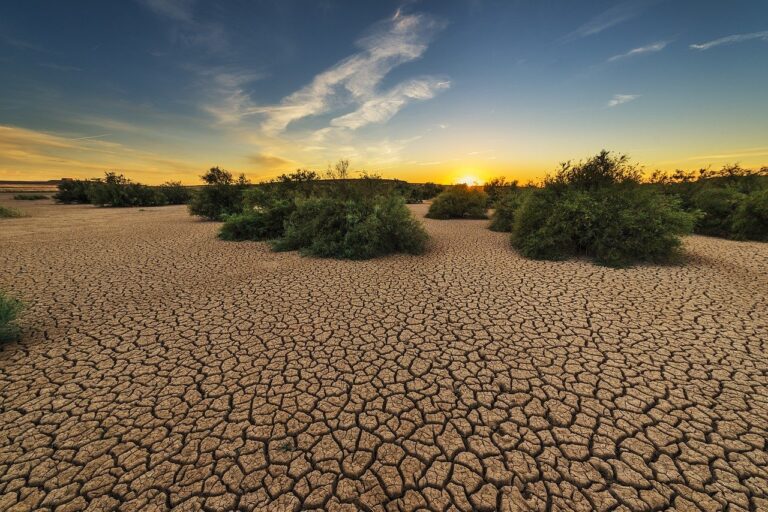The summer of 2022 has recorded the hottest temperatures in the northern hemisphere. In Europe and parts of China, extreme temperatures have caused drought conditions. In Africa, these dry spells are putting millions at risk of starvation. Wildfires have scorched thousands of acres across the US and other parts of the world. Even the Arctic Circle is feeling the heat.
Recent weather patterns may indicate significant climate changes, but are these recent months the driest on record?
Table of Contents
How dry was planet Earth in summer 2022
Scientists measure drought conditions by analyzing the soil moisture level, which is determined by satellite imagery. The measurement is called the “precipitation-evapotranspiration index” or P-EI, giving a general idea of how much water is available for plants.
The P-EI measurement has been calculated since 1982 and goes back to 1948 for some locations. It can be estimated for other areas, such as those where there are no weather stations, by comparing precipitation over time with evapotranspiration rates — or how much water plants need to survive — for that region.

You can see from the table that drier-than-usual weather patterns have been prevalent in much of Europe and many parts of the world in summer 2022.
Europe’s worst drought in 500 years
According to the EU’s environmental program Copernicus, the drought in Europe is so severe that it could have “serious consequences” for the continent’s food supply.
The findings are based on the analysis of tree rings going back to 1500 AD. While it is normal for Europe to experience droughts every ten years or so, scientists say droughts have become more frequent and intense over the past three decades.
The worst-hit regions include Spain, Italy, and Greece, where farmers have been using their wells for irrigation because they can’t rely on rainfall.
Copernicus said the current heatwave was “unprecedented” since 1540 AD. It has caused a reduction in agricultural production across Europe, with some countries seeing their wheat yields fall by 30%.
The organization predicts that if conditions do not improve soon, there will be shortages of key grains such as wheat and barley. This could lead to higher prices at supermarkets and food banks being forced to restrict how much they give out each week.
China’s droughts and floods in summer 2022
This summer of 2022 was one of the hottest and driest on record in China. China’s Meteorological Administration reported that the country experienced an extended period of high temperatures—the longest in recorded history.
In June and July, temperatures rose above 40 degrees Celsius in most parts of eastern China. It reached 44 degrees Celsius in Beijing on July 18 — its hottest day ever recorded. The heat wave continued until September, when heavy rainstorms hit Beijing and other northern Chinese cities.
The hot weather led to a severe drought in southern China, while floods were reported in other parts of the country — particularly along its eastern coast, where typhoons made landfall. The combination of extreme heat and lack of rainfall caused many provinces to face water shortages while others were hit by flooding from torrential rainstorms.
The severity of this summer’s weather conditions was unprecedented in China’s history and is expected to have more serious implications for its economy and society.
Famine warnings in Africa
The United Nations is warning that the world could face famine in Africa, with 22 million people at risk of starvation.
The UN’s humanitarian chief, Mark Lowcock, said that without urgent action to curb climate change, droughts would become more frequent and extreme. “If we do not take action today,” he said, “tomorrow will be too late.” He said he was particularly concerned about eastern Ethiopia, northern Kenya, and Somalia – where drought conditions have been declared a national disaster by the governments of those countries.
In Ethiopia alone, 11 million people need emergency food aid, while 10 million do so in Somalia. Kenya has seen its worst drought in 60 years, affecting nearly six million people – half its population – with more than 2 million requiring immediate assistance.
Drought conditions in the US
It’s been so dry in the western US that water levels have fallen to record lows, as seen in Lake Powell and Lake Mead. The drought has been going on for a while now with no signs of improvement.
Lake Powell is the second largest reservoir in the US, but it’s at less than half its capacity. The lake has lost more than a third of its capacity since 2000, with some areas losing up to 90%. Lake Mead also suffers from low water levels, and has been at its lowest since 1999.
Water shortages affect farmers who grow crops like alfalfa hay and melons in California’s Imperial Valley – one of the driest regions in the US – where farmers have lost more than 50% of their crops due to lack of rain this year alone.
Climate change: we can contribute to stop it
We hope this article has helped prepare you for the next few months. Whether this turns out to be the driest, second-driest, or wettest year in history, the trend is clear: global climate change is happening, but it doesn’t have to be all gloom and doom. We can change our patterns of consumption and reduce our greenhouse gas emissions. As humans, we ultimately hold the power to decide the fate of our planet in our hands.












